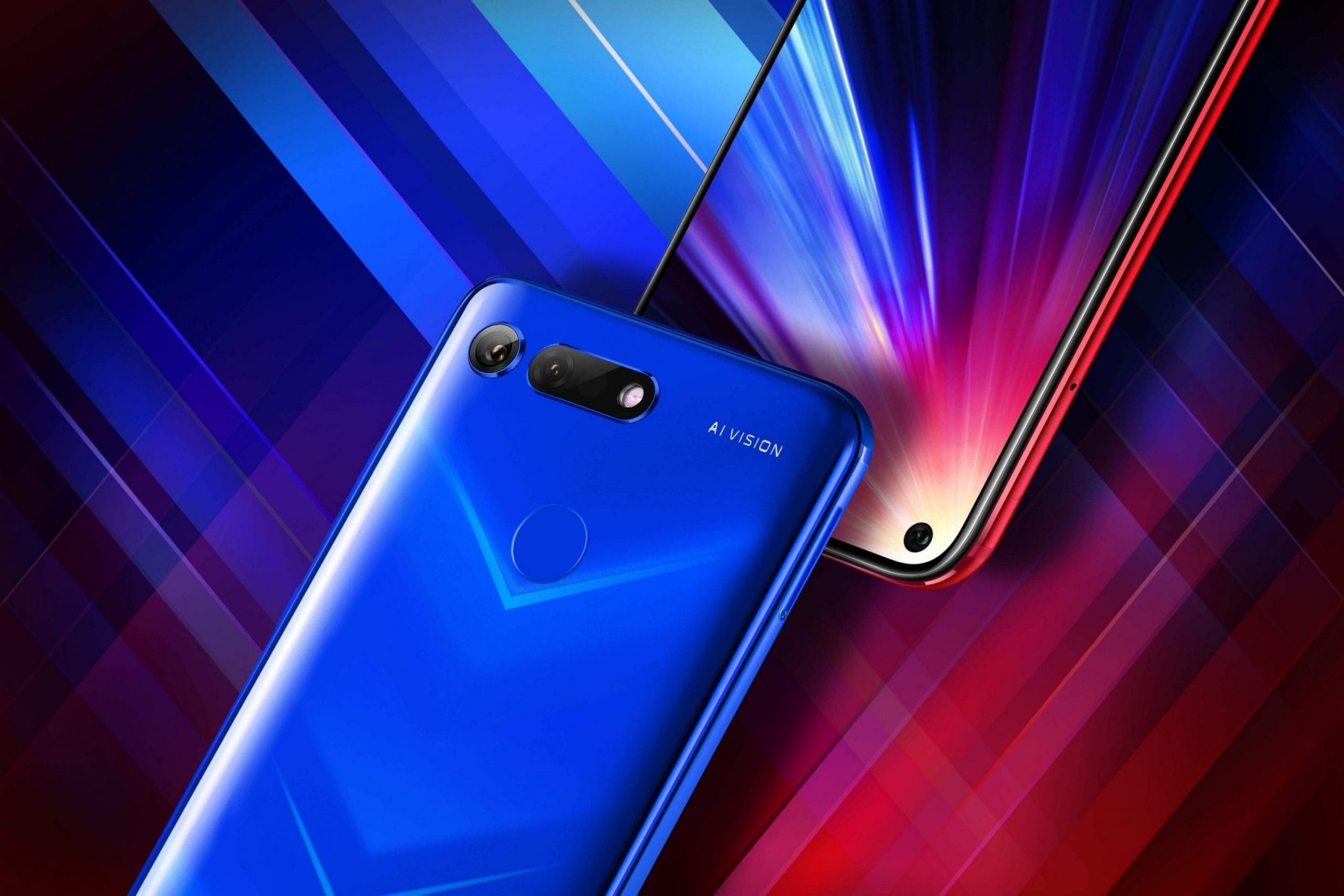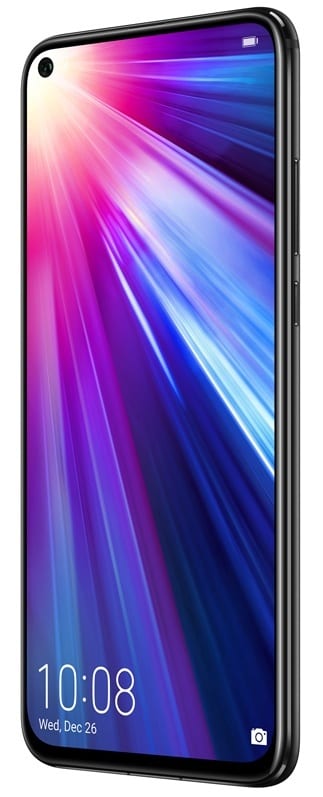
Honor View 20 Review: A flagship phone with very little cut out

Cast your mind back to 2013 when Nokia launched a phone with a 41-megapixel camera. Many people thought the company had gone mad.
Today Honor has launched a 48-megapixel endowed phone in the form of the Honor View 20.
Almost six years on, I doubt anyone will think the company has gone mad, but many may have some scepticism and wonder if this is just an attempt at restarting the playing-the-numbers game.
In the case of the View 20, it’s not all about the huge camera on the back, but rather the camera on the front too; a 25-megapixel camera embedded within the display itself to allow for a near all-screen frontage.
Complete with Huawei’s flagship chipset and a large battery, the Honor View 20 is Honor’s top-end smartphone for 2019, and I’ve had one for a couple of weeks to give it a thorough test.

Introduction
The Honor View 20 replaces last year’s View 10, which in turn took over from the Honor 8 Pro.
Although none of these have been pitched as business phones, they’re clearly ideal for people that demand the best performance in a range of areas, which is why it comes with the same chipset as Huawei’s Mate 20 Pro, a high-quality display, the oversized camera, plus a large battery.
At the time of publishing this review, the retail price had not been revealed. It’s expected to be around the £500 mark or less, making it a serious competitor to the £900 Mate 20 Pro, and what I’ve based some of my opinions on. [Update: Yes, it’s £499 for the standard edition, and £579 for the Moschino version with extra RAM and storage]

The View 20 comes with a USB-C charging port, a 3.5mm headphone socket, and there’s even an Infrared port to control your TV and other suitably equipped appliances.
You also get the Mate 20 Pro’s wireless desktop mode for suitably equipped TVs and monitors, or via a USB-C to HDMI cable. Hook up a Bluetooth keyboard or mouse (or via USB with a hub) and you’ve got even more productivity potential.
Compared to the Mate 20 Pro, the fingerprint sensor is positioned on the back rather than embedded in the display, but besides that and also a lack of any IP-rating for water resistance, there are a lot of similarities to the more expensive Huawei phone.

Design & Build
The View 10 and Honor 8 Pro were each quite sturdy phones, with metal on the back instead of the usual glass, favoured on more ‘fashionable’ models.
For the View 20, Honor has decided it’s time for glass to make an appearance. There’s likely a good reason, as it has allowed Honor to give the View 20 a unique look that goes far beyond what has been done on previous glass-backed models.

Thanks to a ‘nano texturing’ effect, the View 20 gets a ‘V’ light design that allows the rear to show off a unique V that travels through the phone in a similar way to seeing the light travel though a hologram sticker.
The phone is available in three colours; Phantom Blue, Midnight Black (the model I had to review) and Honor’s signature Sapphire Blue.
The effect may initially seem more muted on the black model, but it does allow for a stronger visual appearance when you catch the light right. I have no doubt this design will continue on other mid to high-end Honor phones going forward.
The phone is also just 8.1mm thick, despite having a 6.4-inch display and squeezing in a 4,000mAh battery.
Screen
Before talking about the rear camera and all its 48-megapixel goodness, let’s look at the screen.

In the race to create a true all-screen display, manufacturers have been trying a number of different ideas. 2018 was clearly the year of the notch, but 2019 will likely see a variety of solutions to see what the consumer prefers.
Just recently Xiaomi launched the Mi MIX 3 in the UK, where the selfie-camera is revealed on demand through a sliding mechanism. It works well, but adds to the thickness of the phone, as well as restricting the battery capacity (although I did find battery life to be excellent in my review).

In the case of the View 20, the selfie camera is embedded within the screen. It’s worth noting that in China, Honor released a phone – the Magic 2 – with a slide-up camera too. However, it is not destined for a release outside of China.
The positioning of the camera hole is in the top-left corner, so as to minimise its impact on normal operation.
Ordinarily in portrait mode, the top of the screen will be for notification icons, the time, signal strength etc. In landscape mode, and in particular for gaming, holding the phone will likely obscure the bottom two corners anyway.
It’s a compelling explanation, although for watching a film or zooming in on a photograph, and not covering the corners, the cut out does look rather odd – like a giant dead pixel if you like.

Having had the phone for a couple of weeks, I did get sufficiently used to the hole so as not to really notice it after a while, but if you think the notch debate was fierce, you can be sure that it is going to be crazy when discussing embedded cameras.
With Samsung soon to launch new phones with the same idea, it will be yet more interesting to see where public opinion goes.
Finally, it’s worth noting that Honor has used an LCD panel rather than OLED. The 1080 x 2310 pixels makes for an impressive 398 pixels-per-inch, but with no perfect blacks you will never be able to entirely hide the camera even if you use the now common hide notch menu option.
Nevertheless, the screen is bright and vivid, and with support for HDR too.
YouTube supports HDR fine, and also allows you to scale up to fill the entire screen. Some other applications, including Netflix, will operate as if the section of the screen with the camera is out-of-bounds, creating a black vertical border instead.
Honor has stated that some apps will need to be updated to offer true full-screen compatibility. Hopefully this will happen sooner rather than later.
Camera

Nokia’s huge camera on the Lumia 1020 wasn’t intended to save full-resolution images (though you could) but rather to create better quality images at a more sedate 5-megapixel resolution.
There were many advantages to this process known as pixel binning, which many manufacturers have employed on phones since – albeit with smaller sized image sensors.
Another benefit is being able to use the extra pixels to offer a lossless zoom feature, another feature that has been utilised on other handsets, such as the Huawei Mate 10 Pro (before the P20 Pro and Mate 20 Pro handsets added a separate telephoto camera, and then later a wide angle camera).

So, besides the increase to 48-megapixels, has Honor really done anything revolutionary?
In my opinion, yes, because while Nokia allowed the saving of ‘raw’ images at full resolution back in 2013, Honor has gone a step further utilising the AI functionality of Huawei’s flagship Kirin 980 processor, with dual neural processing units (NPUs).
Just as Huawei introduced AI stabilisation to give stunning, blur-free, night shots without the need for a tripod (a feature the View 20 has too, I should add), Honor has introduced a feature called AI Clarity.
Sample photos
More photos can be found in a separate gallery
This is a feature Nokia no doubt would have had too, if the processing power of the day had been up to the job. Anyone that owned the Lumia 1020 can probably remember that it wasn’t particularly fast at doing anything, but things have moved on.
What AI Clarity does is save full 48-megapixel images (at a crazy 8,000 x 6,000 pixel resolution), composed from the combination of multiple shots to get the best possible mix of lighting and detail.
The AI tech makes sure to do this even if each individual shot may be at a slightly different angle on account of hand shake.
Just like taking night shots, you are not required to steady the phone with a tripod. All the while (it may take from 3 to 5 seconds, depending on the light) the phone can cope with moderate levels of camera movement, as well as some movement within the scene itself – although you are advised to use this mode on things like scenery.
Thanks to the NPUs, other features from the Mate 20 Pro are available here too – such as the AI Colour mode in video recording (turning the entire scene black and white, bar the person you’ve focussed on) and a range of other effects like AR Lens, which will let you create animated emojis using your own head movements, facial expressions and voice.

Despite having just the one image sensor, the camera is supplemented with a 3D Time-of-Flight (TOF) sensor to provide better depth-sensing – even in the dark – than using a traditional image sensor. This is stated as being a more effective method of offering portrait/bokeh photos than using a second ordinary camera.
Finally, that hidden camera on the front? At 25-megapixels and with a f/2.0 aperture, you can also take high-quality selfies with a range of beauty effects that, you’ll perhaps be pleased to know, can also be turned off to allow for full-resolution shots if preferred.
Performance
With Kirin 980 under the hood, the View 20 is a monster in the performance stakes. The 4,000mAh battery is another awesome addition, although the lack of wireless charging support is a little disappointing given how the View 20 swapped the View 10’s metal back for glass.
It would have been nice to gain wireless charging as a little compensation for a more fragile package than last year’s flagship. Unfortunately, it was not meant to be.
There is Super Charge support though, albeit not the on-steroids version that is supported on the Huawei Mate 20 Pro. A Super Charge power supply is included in the box, along with a clear protective case.
The Honor View 20 comes in three configurations when it comes to RAM and storage. The first, and the model I received, and is expected to be sold in the UK, is 128GB of storage and 6GB of RAM. The second is 128GB of storage and 8GB of RAM, while the third option is 256GB of storage and 8GB of RAM.
Dual 4G SIM support is also standard, with support for VoLTE (4G Calling) and VoWifi (Wi-Fi Calling) on my device, tested on Three UK.
All models will ship with Android Pie, and Magic UI (V2) instead of the usual Emotion UI (EMUI), although I didn’t find any significant differences.

The View 20 offers a feature called Link Turbo that can aggregate Wi-Fi and mobile data connections to boost speed and improve resilience to poor signal quality, but I couldn’t find any reference to this feature on the pre-release software. As such I cannot comment on this particular feature now.
It should be noted that during my review, a major over-the-air update was issued to add the final camera software, with the AI Clarity mode added, so I am happy to publish this review as being representative of the final retail models.
If, however, there are any glaring changes in the coming weeks I will update this review accordingly.
Finally, whereas I might write a lot about the power management tools on the phone, I will save you time by saying that it is identical to every other Huawei and Honor phone of late, with the ability to manage apps automatically (for things like background running) or on an app-by-app basis.
You can also enable one of two power saving modes, plus a performance mode that doesn’t hold back anything (complete with a warning that you may drain the battery at a higher rate).
Considering the battery kept me going a whole day (with over 5 hours screen on time), if you are close to a source of power, there’s no harm pushing the boat out to enjoy the best possible experience.

Summing Up
It’s been very exciting to start the year with two impressive releases, each competing head-on to win a flagship crown, yet at a far lower cost than rival Android handsets from the likes of Samsung and Huawei.
The View 20 is a significant step up from last year’s View 10, with a camera that really can stand up to higher priced alternatives. The huge image sensor allows for incredible photos in all different conditions, while the AI Clarity mode is a feature that puts the phone ahead of rivals, if you want all-out quality at the largest possible size.
If you need photos that can be printed in the highest possible quality, or cropped, look no further.

The screen is sure to divide opinion, but you’ll get used to the cut out in time. If you prefer, you can hide the top of the display in the same way as traditional notched displays. The choice is yours.
Finally, thanks to that large battery, the View 20 encourages you to let yourself go and enjoy everything it has to offer without fear.
While you can be sure the successor to the Honor 10 later this year will have plenty of features to excite, this is the flagship phone with the largest display for 2019 – so if that’s what you are looking for, you can buy with confidence.
Look back at the benchmarking score above, to see that you’re getting a serious amount of phone for the money.
Good Points
– Excellent, versatile, camera
– Killer battery
– Bright, vivid, screen
– Protective case in box
– Competitive price
Bad Points
– Controversial display cut out
– No wireless charging
– No water resistance
Availability information
At the launch event, it was announced that there will be two variants of the phone. The first version will retail for £499 and come with 6GB of RAM and 128GB of storage. The Moschino co-design versions will retail for £579 and come with 8GB of RAM and 256GB of storage.

Honor View 20 Standard 
Honor View 20 Moschino
“Thanks to its large battery, the View 20 encourages you to let yourself go and enjoy everything it has to offer without fear.”



















An amazing offering at an unbelievable price point, where will it end 👍